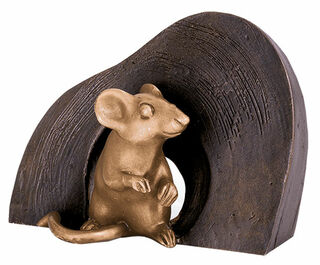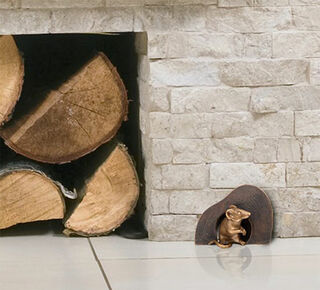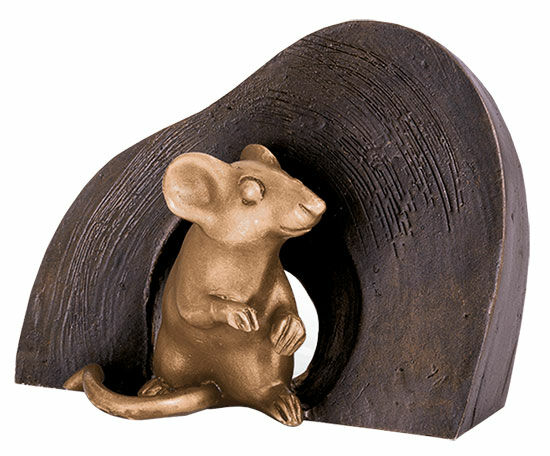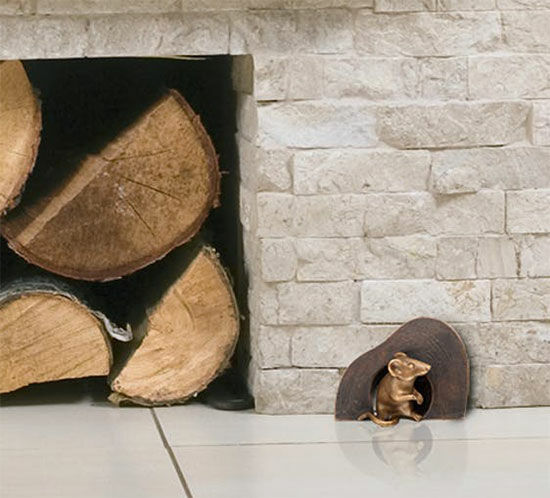Quick info
bronze | hand-chased and hand-patinated | size 8 x 10.5 x 4 cm (h/w/d) | weight approx. 0.5 kg | incl. mounting hardware
Detailed description
Garden sculpture "Mouse, Sitting", bronze
The mouse is not only found in forests and meadows - it is a synanthropic animal that likes to live close to humans - the Aesopian fable already tells of the encounter between the mus rusticus (the country mouse) and the mus urbanus (the city mouse). As a fine bronze figure, you can confidently invite them into your house and garden as guests: Your cheese stocks will remain untouched, nothing will be gnawed on and even at night, they will be quiet. This rodent provides its own house - i.e. the mouse hole.
Bronze sculpture, cast using the Lost-Wax-Process, chiselled and patinated by hand. Size 8 x 10.5 x 4 cm (h/w/d). Weight approx. 0.5 kg. Can be fastened using the threaded pin supplied.
This object is part of the following sets
Customer reviews
-
An alloy of copper with other metals (especially with tin) used since ancient times.
When casting bronze, the artist usually applies the lost-wax technique which is dating back more than 5000 years. It's the best, but also the most complex method of producing sculptures.
First, the artist forms a model of his sculpture. It is embedded in a liquid silicone rubber mass. Once the material has solidified, the model is cut out. The liquid wax is poured into the negative mould. After cooling down, the wax cast is removed from the mould, provided with sprues and dipped into ceramic mass. The ceramic mass is hardened in a kiln, whereby the wax flows out (lost mould).
Now we finally have the negative form, into which the 1400° C hot molten bronze is poured. After the bronze had cooled down, the ceramic shell is broken off and the sculpture is revealed.
Now the sprues are removed, the surfaces are polished, patinated and numbered by the artist himself or, to his specifications, by a specialist. Thus, each casting becomes an original work.
For lower-quality bronze castings, the sand casting method is often used which, however, does not achieve the results of a more complex lost-wax technique in terms of surface characteristics and quality.
A plastic work of sculptural art made of wood, stone, ivory, bronze or other metals.
While sculptures from wood, ivory or stone are made directly from the block of material, in bronze casting a working model is prepared at first. Usually, it is made of clay or other easily mouldable materials.
The prime time of sculpture after the Greek and Roman antiquity was the Renaissance. Impressionism gave a new impulse to the sculptural arts. Contemporary artists such as Jorg Immendorf, Andora, and Markus Lupertz also enriched sculptures with outstanding works.







